JF Ptak Science Books LLC Post 533
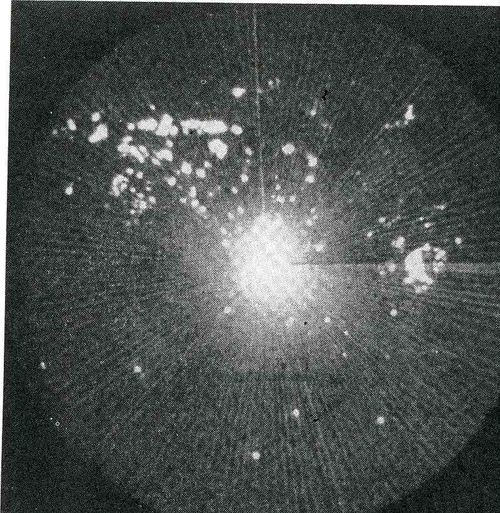 (Forcibly!) joining a continuing series of posts on Blank and Missing Things and a History of Dots, we'll look today at intellectual hermorphiditism, alpha omegas, nuclear particle tracks, negative galaxies and the wanderings of a centenarian vegetarian pro-lefty Vermont commie's middle-missing thoughts.
(Forcibly!) joining a continuing series of posts on Blank and Missing Things and a History of Dots, we'll look today at intellectual hermorphiditism, alpha omegas, nuclear particle tracks, negative galaxies and the wanderings of a centenarian vegetarian pro-lefty Vermont commie's middle-missing thoughts.
I know that you can find dots everywhere if you look hard enough, or magnify things enough, or get far away from them enough....it seems that once you start on either route in the powers of ten game that getting to 10 (7th) things start to look very dotty indeed. What was on my mind was the similarity between particle tracks (and particularly the photographs of the very earliest ones) and negatives of images of galaxy clusters. The image to the left, to encumber things a little further, is another look-alike from 1947: a moving target indicator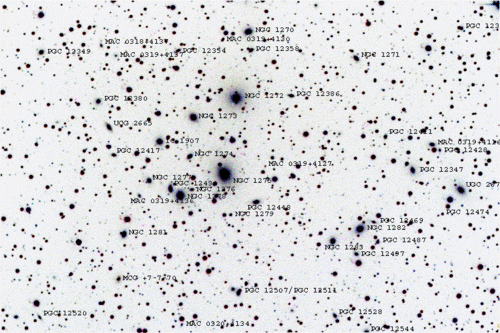 (showing the cluttered field of a Japanese freighter convoy at sea). A negative photo of a section of a galaxy cluster in Perseus is directly below, while just below that is a cloud chamber of what is probably the first photo showing the track of a cosmic ray (1927 by Dmitry Skobeltzyn).
(showing the cluttered field of a Japanese freighter convoy at sea). A negative photo of a section of a galaxy cluster in Perseus is directly below, while just below that is a cloud chamber of what is probably the first photo showing the track of a cosmic ray (1927 by Dmitry Skobeltzyn).
The next image, also from 1947, is the first observation of the disintegration by a negative meson (appearing in Nature Magazine #126 for 1947).
The galaxy and particle images, at nearly-opposite ends of the existence spectrum: from 10 (-10) meters (or .0000000001) to 10 (+14) meters (and actually 10 +14 through 10+25 meters, looking pretty much the same), the story is all pretty much dots, from the deepest buzzy recesses of a proton to the outer reaches of the outermost bits of the outer universe. The middle part is where all of the "stuff" is, the (near) alpha and omega of whatever there *is*.
And somehow this gets me to the two works here, both issued in 1947, by Scott Nearing, our centenarian Vermonter communist, who manages his very own alpha and omega, who covers the very ends of the spectrum without getting bogged down with the slumpy middle part....which of course is just about everything.


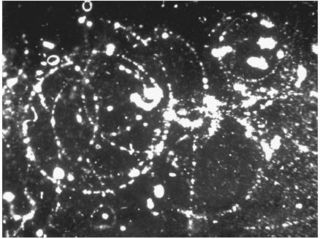
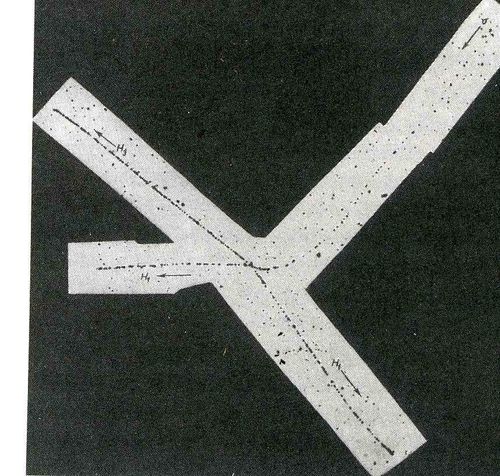
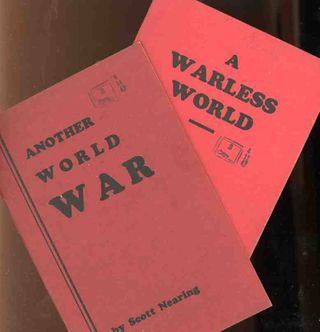

Comments